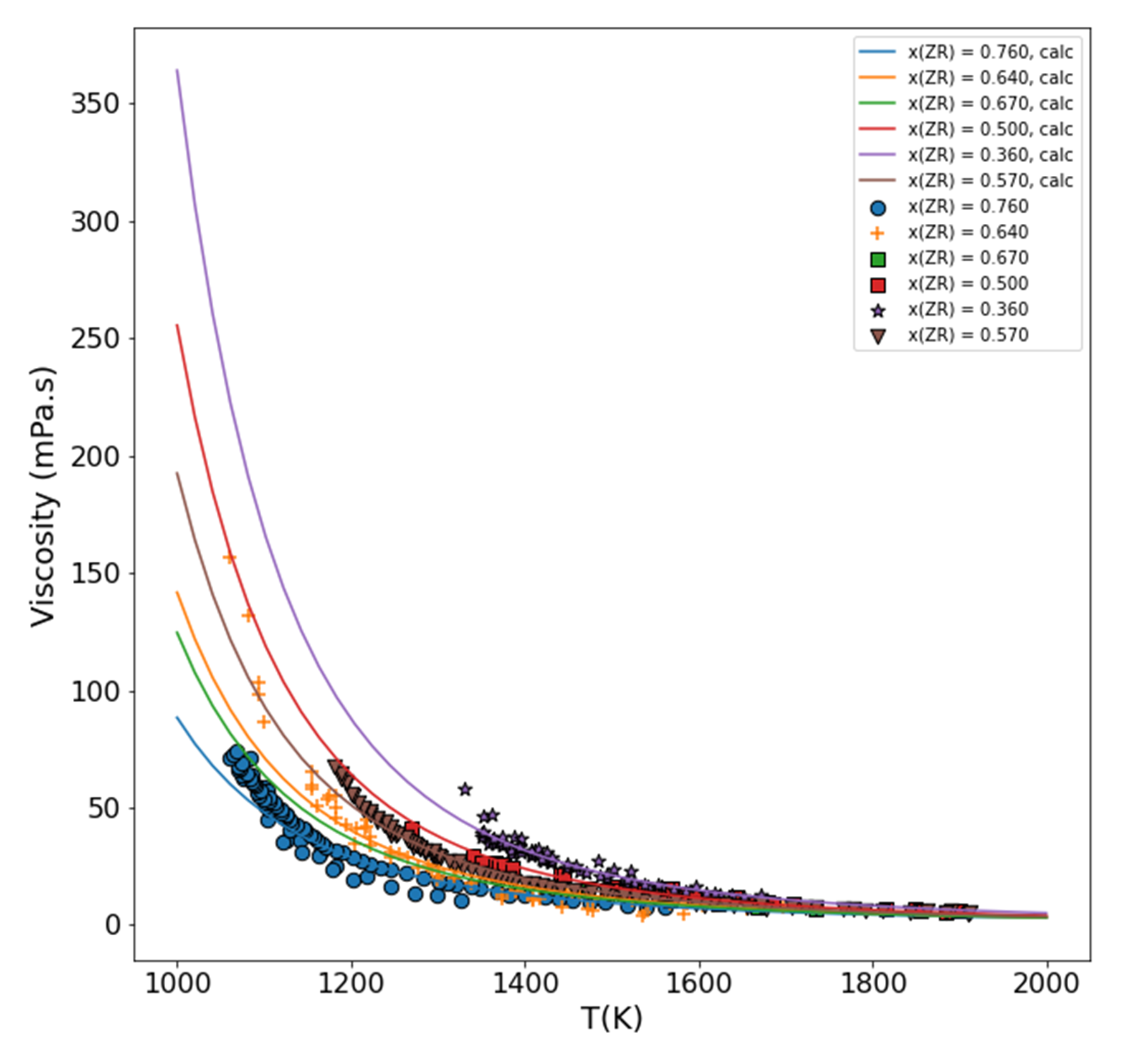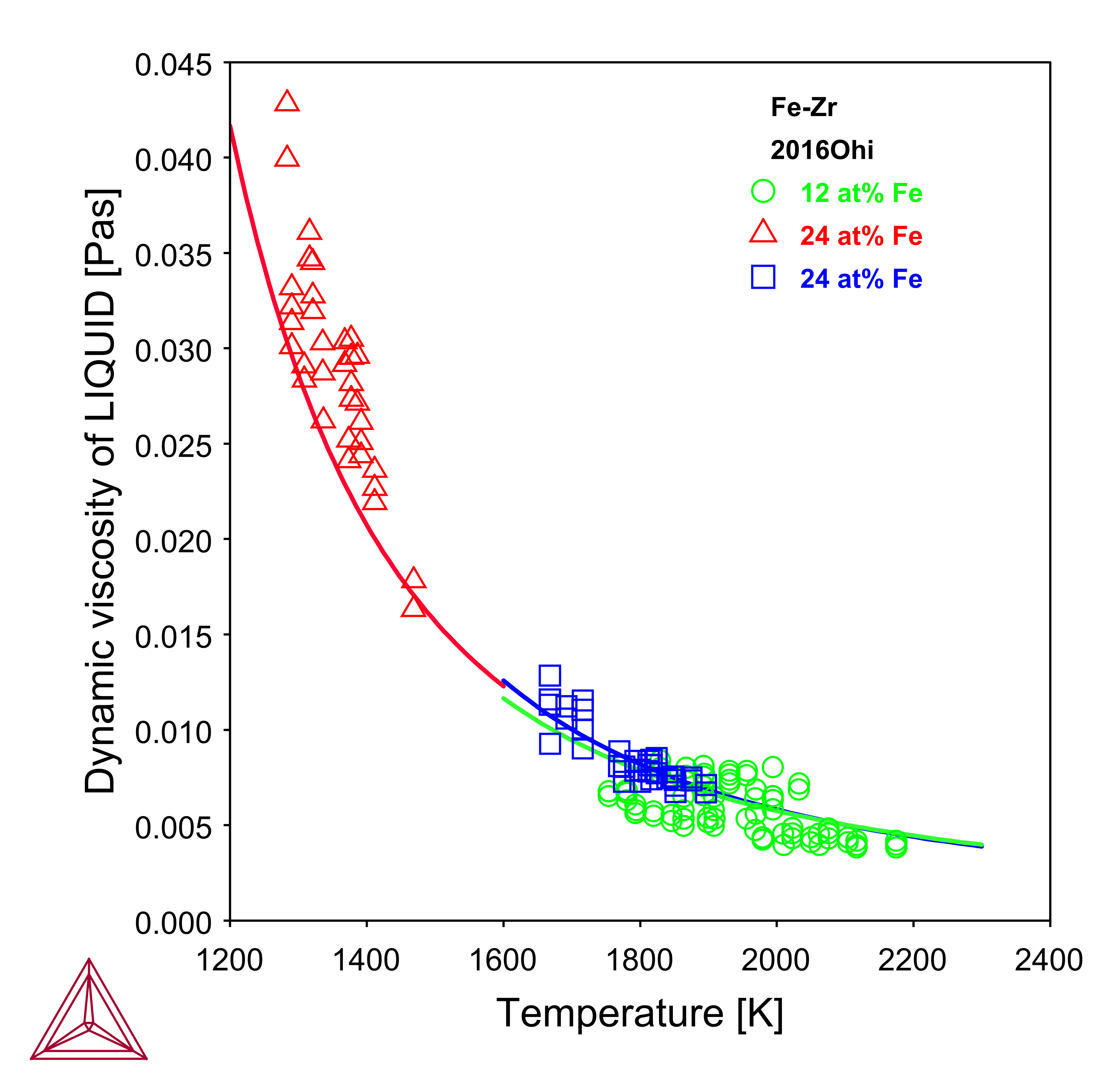Viscosity: Ni-Zr and Fe-Zr
The viscosity thermophysical property data is included with the TCS Zr-based Alloys Database (TCZR).
Ni-Zr
The dynamic viscosity of the Ni-Zr system has been studied extensively [1998Ohs; 2014Joh; 2017Ohi]. Except for the values reported by Ohishi et al. [2017Ohi], the other measurements are in agreement with each other. The calculated viscosity curves after assessing this system based on the experimental data are shown in the following figure.
Figure 1: Dynamic viscosity of Ni-Zr binary alloys at various compositions compared with experimental data from [1998Ohs; 2014Joh].
Fe-Zr
The calculated dynamic viscosity of the Fe-Zr system along with experimental data is shown below.
References
[1998Ohs] K. Ohsaka, S. K. Chung, and W. K. Rhim, Specific volumes and viscosities of the Ni–Zr alloys and their correlation with the glass formability of the alloys, Acta Mater., vol. 46, no. 13, pp. 4535–4542 (1998).
[2014Joh] M. L. Johnson, N. A. Mauro, A. J. Vogt, M. E. Blodgett, C. Pueblo, and K. F. Kelton, Structural evolution and thermophysical properties of ZrxNi100−x metallic liquids and glasses, J. Non. Cryst. Solids, vol. 405, pp. 211–218 (2014).
[2016Ohi] Y. Ohishi, H. Muta, K. Kurosaki, J. T. Okada, T. Ishikawa, Y. Watanabe, S. Yamanaka, Thermophysical properties of molten core materials: Zr–Fe alloys measured by electrostatic levitation. J. Nucl. Sci. Technol. 53, 1943–1950 (2016).
[2017Ohi] Y. Ohishi, T. Kondo, T. Ishikawa, J. T. Okada, Y. Watanabe, H. Muta, K. Kurosaki, S. Yamanaka, Physical properties of molten core materials: Zr-Ni and Zr-Cr alloys measured by electrostatic levitation. J. Nucl. Mater. 485, 129–136 (2017).

